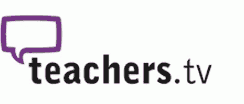Light Visible 5-7
This collection explores visible light, in particular colour, suitable for ages 5-7.
About visible light: The visible spectrum is the portion of the electromagnetic spectrum that is visible to the human eye. Electromagnetic radiation in this range of wavelengths is called visible light or simply light. A typical human eye will respond to wavelengths from about 390 to 700 nm. In terms of frequency, this corresponds to a band in the vicinity of 430–770 THz.
Resources in this collection:
- A First Look at Light: This Nuffield Primary Science book consists of 11 colourful, and highly illustrated, double-page spreads aimed at students aged 5-7
- Colour Chaos: The nineteen activities within this pack investigate colour and link to many topics at primary level including: light and sight, plants, properties of materials and habitats. Designed to demonstrate key ideas and concepts and to spark an interest in science and engineering, they could be used in class or within a science week or club.
- Do Try This at Home - The Light Collection: This series of Marvin and Milo cards have been pulled together for the International Year of Light 2015. They include eight simple experiments that can be performed at home that link in to the theme of light
- Light and Optics Teacher Resource and Class Activities: This teacher guidance from NASA describes colour and light activities that can be used with students from Key Stage Two to Four. Using lenses, prisms and mirrors students create telescopes, periscopes, microscopes and kaleidoscopes. Other activities include finding focal length and understanding reflection, refraction and diffraction. The resource shows levels corresponding to the American school system but the range of activities are suitable for primary and secondary students in the UK.
- Light Show: This Science Tube video, from Teachers TV, helps children to understand about light and seeing.
- Rainbow Spinner: Aimed at primary level, this activity links to the topic of light and how the rainbow colours can be brought together to produce white light.
Children make spinners and colour them in the colours of the rainbow. They then investigate how we see them when they spin. By spinning the disc quickly, the eye sees all the colours together (persistence of vision) and so the disc appears white.




